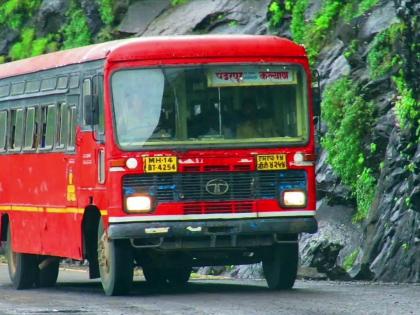MSRTC's 'Laal Pari' marks 75 years of connecting rural Maharashtra
By Lokmat English Desk | Updated: June 1, 2023 15:51 IST2023-06-01T15:50:24+5:302023-06-01T15:51:21+5:30
The Maharashtra State Road Transport Corporation (MSRTC), commonly known as 'Laal Pari,' celebrated its 75th anniversary on Thursday, June ...

MSRTC's 'Laal Pari' marks 75 years of connecting rural Maharashtra
The Maharashtra State Road Transport Corporation (MSRTC), commonly known as 'Laal Pari,' celebrated its 75th anniversary on Thursday, June 1. The bus service was initially established on June 1, 1948, operating on the Pune-Ahmednagar route. Over the years, this service has played a vital role in connecting various districts, particularly the rural areas of Maharashtra.
Originally painted in blue and silver, MSRTC gained popularity as the beloved 'Laal Pari' (Red Fairy) when the state government opted to change its colour to red in 1960. Despite undergoing transformations and introducing buses of various colours to adapt to changing times, people, especially those from rural Maharashtra, continue to affectionately refer to it as Laal Pari.
On June 1, 1948, the government of Bombay State initiated its own state road transport service known as State Transport Bombay. This marked the beginning of the state transport department, and the first bus, painted in blue and silver, embarked on its journey from Pune's Swargate to Ahmednagar. The fare for travelling on the Pune-Nagar route at that time was nine paise.
The State Transport Bombay transformed into the Bombay State Road Transport Corporation (BSRTC) after the Road Transport Corporation Act was passed by the Central Government in 1950. This act empowered the states to establish their own road transport corporations, with the Central Government contributing one-third of the capital. Subsequently, when Bombay State was divided into Maharashtra and Gujarat on May 1, 1960, it was renamed as the Maharashtra State Road Transport Corporation (MSRTC). During this transition, the state government made the decision to change the bus colour from blue and silver to red.
At first, the bus service was limited to daytime operations. However, in 1956, the service expanded to include partial nighttime operations, and nearly ten years later, overnight service was also introduced. In 1982, during the Asian Games held in India, the MSRTC introduced a semi-luxury class for its buses.
Adapting to the changing times, the MSRTC introduced its first electric bus named Shivai on the Pune-Ahmednagar route, where the state transport service initially began. The electric bus was inaugurated at the Swargate Bus Stand last year. From its humble beginnings with 30 buses, the MSRTC now boasts a fleet of over 18,000 buses and employs more than 100,000 individuals across the state. The state government has recently declared a 50 per cent discount on bus tickets for women passengers travelling on state transport buses.
Open in app